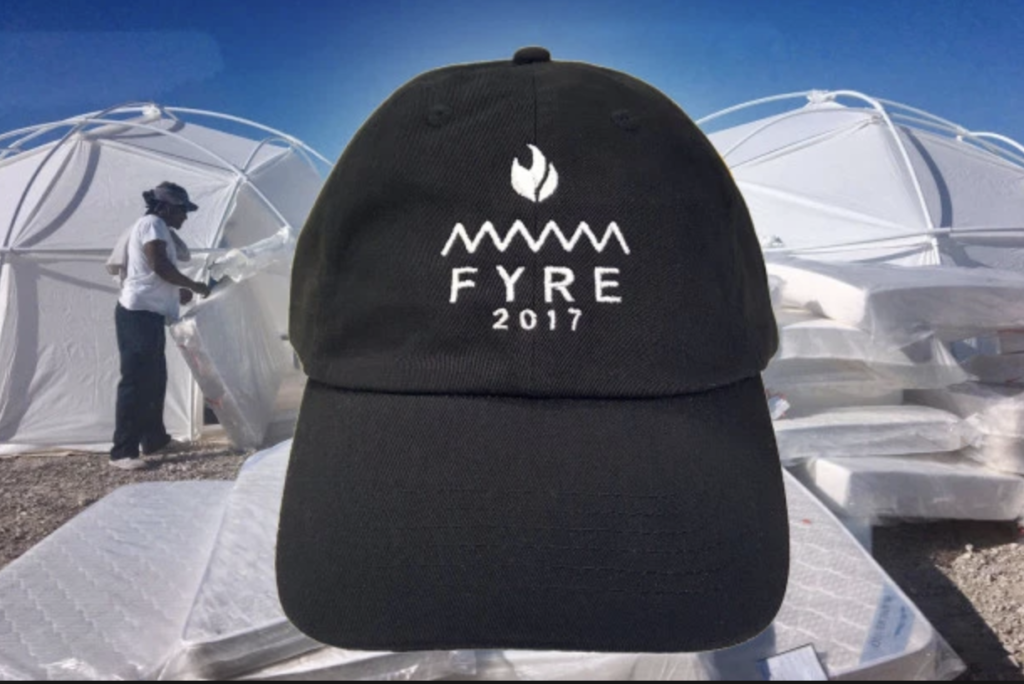Fyre Fest and the evolution of social media “Influencer”
By Fizz May 2, 2019
By Scott Jenson
We’ve all heard the stories by now. A young entrepreneur named Billy McFarland planned on throwing the world’s most glamorous music festival on a private island in the Bahamas. The Fyre Festival was introduced to the world through videos and still shots of beautiful Instagram models and “influencers,” and a simple orange tile posted on 63 social media influencers that garnered 300 million impressions in 24 hours.
It worked to a certain extent. Thousands of people slapped down exorbitant amounts of money and booked flights to the festival based on the premise that this would be THE event to be seen at. By all accounts it seemed like a celebrity dream, festival goers would be whisked away to a luxury compound surrounded by their favorite instafamous people. The WOM generated by this social media play was huge and impactful.
Fyre Fest two years later
The reality of the fest was more of a nightmare though, and the fallout was well documented. So why is it, in today’s ever quickening news cycle, that two years later the debacle that was Fyre Fest is still relevant? Besides two documentaries (released on Hulu and Netflix, respectively) that have finally filled in a lot of the gaps in what happened and exposed the behind-the-scenes maneuvering that suckered more that 8,000 people, there has been a large recent outcry over social media platforms and how they are used.
Fyre Fest could be considered a success story in terms of building a social media buzz, but one that ultimately became one of the biggest flops in concert production history. A cautionary tale for those that would trust a complete stranger simply because they have millions of followers.
The fallout from that story, along with recently exposed gaps in privacy on social media and a blurring of the lines between advertising and native endorsement has brands and social media platforms working on newly exposed problems with how brands interact with users. With stories like the Cambridge Analytica/Facebook debacle inciting calls for greater oversight on social media platforming, and Instagram introducing more branded content tools to make advertiser/influencer relationships more transparent, could we be getting to a place where WOM online is trusted as much as in person?
Maybe, but there’s a long way to go before that happens.
A matter of trust
Social media platforms are certainly looked at with distrust, along with brands that utilize a lot of social media sponsorship. A recent Edelman survey had approximately half of survey 9000 respondents seeing “brands as complicit in other social media ills.” Experts watching the trends of how marketing budgets are applied to influencers are seeing a shift towards nano-influencers and more extended partnerships, presumably seeking more authenticity and cost savings. Instead of paying six figure sums for single posts by influencers with reach in the millions, more brands are seeing the value in influencers with smaller, but more engaged, audiences.
However this ultimately plays out, you can rest assured that less people will be willing to make significant investments in consumer products (and certainly not jump on planes to remote islands) based on a few Instagram posts.
In person, real conversations will remain the most influential for consumer purchasing decisions. 83% of Americans say that word of mouth recommendations from friends or family members make them more likely to purchase that product or service. So, while it may get more than a few eyes on you to have a Kardashian post a picture of themself with your product, you may be better off taking your brand to where your consumers live, work, and pray.
As marketers who work in the social media influencer space move more towards authenticity, it’s easy to forget that there is already a very authentic pathway for your brand, and it won’t cost $250K a picture.
Scott Jenson is a marketing manager for Fizz who has worked with iconic national and global brands including Coca Cola, Adult Swim, Kauai Coffee and Primo Water. A Marine Corps veteran, survivor of the music industry in the mid-2000’s, and former holder of many titles with the words “Brand,” “Strategy,” and “Marketing,” Scott holds an MBA from the University of Tampa as well as a Bachelor of Fine Arts degree from a tiny college that nobody has ever heard of.

